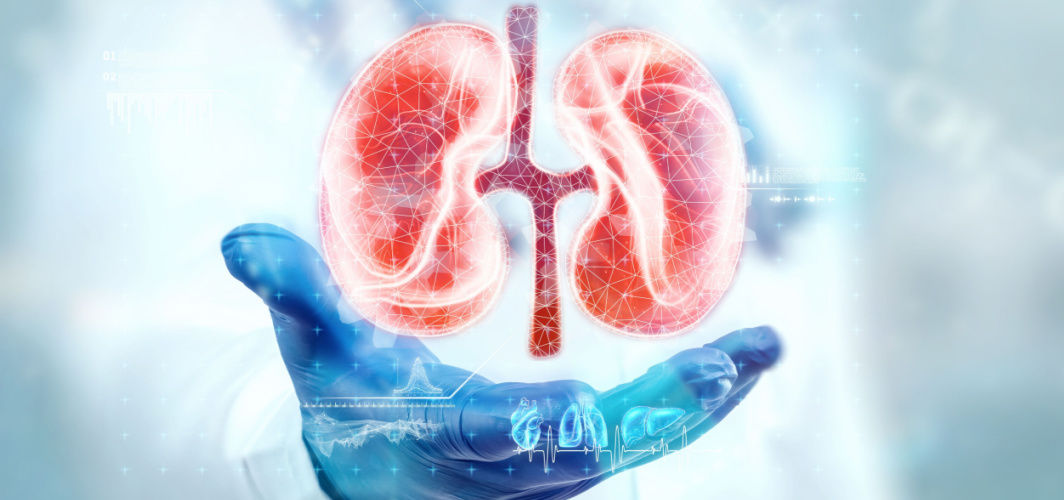General Health
All You Need To Know About Kidney Disease
21 min read
Published on - 04 October 2023, Updated on - 09 October 2023
Share this article
0
0 like

The kidneys play an important role in maintaining our overall health and well-being. They are responsible for several activities within our bodies, especially maintaining bodily balance, regulating fluid levels, and eliminating waste products. Without the kidney operating effectively, harmful toxins can build up, leading to serious health complications.
Understanding the importance of kidney health is essential for preventing kidney disease and maintaining optimal wellness. In this comprehensive article, we will explore various aspects of kidney disease, its causes, symptoms, prevention, and treatment options.
The Role of the Kidneys
The kidneys are an essential part of our body's filtration system. They are two bean-shaped organs located in the upper back on either side of the spine. Let's explore more about the anatomy, function, and regulation of the kidneys.
a. Anatomy and Location of the Kidneys
The kidneys are approximately the size of a fist and are situated just below the rib cage. Each kidney consists of an outer cortex and an inner medulla. The renal artery brings blood to the kidneys, while the renal vein carries filtered blood away. The ureters connect the kidneys to the bladder, where urine is stored before being excreted.
b. Nephron Structure and Function
The nephron is the basic functional unit of the kidney. Each kidney contains around one million nephrons, which are responsible for filtering waste and excess fluid from the blood. The nephron consists of a glomerulus, which filters blood, and a tubule, which reabsorbs essential substances back into the bloodstream.
c. Roles of the Kidneys: Filtration, Reabsorption, Secretion
The main roles of kidneys include filtration, reabsorption, and secretion.
- Filtration: The kidneys filter around 180–200 litres of blood daily to remove waste products like urea, creatinine, and excess water.
- Reabsorption: Essential substances like glucose, sodium, potassium, and water are reabsorbed back into the bloodstream to maintain proper balance within the body.
- Secretion: Waste products such as drugs, excess ions (e.g., hydrogen ions), and toxins are actively secreted into the urine to be eliminated from the body.
d. Regulation of Blood Pressure and Electrolytes
play an important role in regulating blood pressure by controlling the amount of fluid in the body. This is achieved through a complex mechanism involving hormones like renin, angiotensin, and aldosterone. By adjusting the volume of fluids and concentration of electrolytes like sodium and potassium in the bloodstream, the kidneys help maintain proper blood pressure levels.
Maintaining electrolyte balance is also essential for optimum physiological functioning. The kidneys ensure that electrolyte levels remain within a narrow range by selectively reabsorbing or excreting ions as needed. Any imbalance in electrolyte levels can lead to various health issues such as muscle cramps, weakness, and even cardiac problems.
Types of Kidney Disease
Kidney diseases encompass a wide range of conditions that can impact the delicate balance of our body's filtration system, affecting millions of people worldwide. Some of the common types of kidney disease include chronic kidney disease (CKD), acute kidney injury (AKI), kidney stones (renal calculi), polycystic kidney disease (PKD), glomerulonephritis, and urinary tract infections (UTIs). Understanding the various types of kidney diseases is essential for both healthcare professionals and individuals seeking to protect their renal health.
a. Chronic Kidney Disease (CKD)
CKD is a long-term condition characterised by the gradual decline in the kidneys' ability to perform their essential tasks effectively. It is often caused by conditions such as high blood pressure and diabetes. There are five CKD stages. Each stage represents a different level of decline in renal capabilities, with the final stage requiring dialysis or a kidney transplant.
b. Acute Kidney Injury (AKI)
AKI is a sudden onset of kidney impairment that occurs within a short period of time. It is usually caused by severe dehydration, blood loss or certain medications. It can lead to a rapid decline in kidney activity and requires immediate medical attention. Prompt treatment can often reverse AKI.
c. Kidney Stones (Renal Calculi)
Kidney stones are hard deposits that form in the kidneys. They can vary in size and cause severe pain when they pass through the urinary tract. There are different types of kidney stones, such as calcium oxalate stones, uric acid stones and struvite stones. Symptoms of kidney stones often include severe pain in the back or abdomen, blood in the urine, frequent urination or cloudy urine.
Kidney stones are common during pregnancy due to hormonal changes and increased urine concentration. Kidney stone treatment options include medication, lifestyle changes, proper hydration, and in some cases, surgical intervention.
d. Polycystic Kidney Disease (PKD)
PKD is an inherited condition characterised by the growth of numerous cysts in the kidneys. These cysts are fluid-filled sacs that can vary in size and number. Cysts in PKD are formed when the normal tubules of the kidney become dilated and filled with fluid. This occurs due to a genetic mutation that leads to abnormal cell growth and proliferation within the kidney tissue. These cysts can enlarge over time and interfere with the proper operation of the kidneys. PKD may not show symptoms initially but can progress to cause high blood pressure, pain, and even kidney failure. Treatments for PKD focus on managing symptoms and slowing down disease progression.
e. Glomerulonephritis
Glomerulonephritis refers to inflammation of the glomeruli, which are tiny filters within the kidneys. There are different glomerulonephritis types, particularly IgA nephropathy, lupus nephritis, and post-infectious glomerulonephritis. Treatment depends on the underlying cause and may involve medications, lifestyle modifications, and dialysis or kidney transplantation.
f. Urinary Tract Infections (UTIs)
UTIs are common infections that can affect any part of the urinary system. They occur when bacteria enter the urinary system and multiply. Women are more prone to UTIs due to their shorter urethra, which makes it easier for bacteria to reach the bladder. Symptoms include frequent urination, a burning sensation during urination and cloudy urine. Antibiotics are commonly used to treat UTIs, and maintaining good hygiene practices can help prevent them.
Individuals with kidney problems should consult their healthcare provider before attempting pregnancy to ensure a safe and healthy outcome.
Causes and Risk Factors for Kidney Disease
Understanding the causes and risk factors for kidney disease can help prevent its onset and manage existing conditions effectively. Individuals with diabetes, high blood pressure, or a genetic background of kidney disease need to take proactive steps to protect their kidneys. Let's delve into some of the primary causes and risk factors for kidney diseases.
a. Diabetes Mellitus
Diabetes is a leading cause of kidney disease. Diabetic kidney disease (DKD) is a complication that occurs in 20–40% of all people with diabetes. Elevated blood sugar levels over time can damage the blood vessels in the kidneys, impairing their proper performance.
b. Hypertension
High blood pressure is another significant risk factor for kidney disease. The force of elevated blood pressure can damage the blood vessels in the kidneys, resulting in reduced renal capacity. Conversely, kidney disease can also contribute to high blood pressure, creating a vicious cycle.
c. Genetic History
Some individuals may be genetically predisposed to certain kidney conditions. For example, PKD is an inherited disorder characterised by the growth of cysts in the kidneys. Having a genetic history of any particular kidney disease increases the likelihood of developing similar conditions.
d. Obesity and Unhealthy Diet
Being overweight or obese puts extra strain on the kidneys' filtration system, increasing the risk of kidney disease. Additionally, consuming a diet high in sodium and processed foods can raise blood pressure and contribute to the formation of kidney stones.
e. Smoking and Substance Abuse
Smoking not only damages the lungs but also has detrimental effects on your kidneys. Smoking reduces blood flow to the kidneys, impairs their function and increases the risk of kidney cancer. Substance abuse, particularly long-term drug abuse, can also cause kidney damage.
f. Certain Medications
Certain medications can negatively impact the performance of the kidneys, especially if taken for an extended period or in high doses. Nonsteroidal anti-inflammatory drugs (NSAIDs), certain antibiotics, and certain blood pressure medications are known to potentially cause kidney damage.
g. Autoimmune Disorders
Autoimmune disorders like lupus and autoimmune vasculitis can directly affect the kidneys. These conditions cause the immune system to attack healthy tissues, also the kidneys, leading to inflammation and potential kidney damage.
h. Bacterial Infection
Certain bacterial infections can directly affect the kidneys and contribute to kidney diseases. UTIs, especially when left untreated or recurring frequently, can ascend from the bladder to the kidneys, causing inflammation and potential damage. The following is the list of five bacteria that can cause urinary tract infections: Escherichia coli (E. coli), Klebsiella pneumoniae, Proteus mirabilis, Staphylococcus saprophyticus, and Enterococcus faecalis.
Signs and Symptoms of Kidney Disease
Kidney disease is a serious health condition that affects millions of people worldwide (prevalence of CKD worldwide: >800 million individuals). It can lead to various complications if left untreated, making it crucial to recognise the kidney disease symptoms, especially kidney disease symptoms in females, early on. In this section, we will discuss some common symptoms of kidney disease.
1. Fatigue and Weakness
One of the earliest signs of kidney disease is persistent fatigue and weakness. This occurs due to the kidneys' reduced ability to produce a hormone called erythropoietin, which is responsible for stimulating red blood cell production. As a result, individuals may experience a decrease in energy levels and overall weakness.
2. Oedema and Fluid Retention
Another symptom of kidney disease is oedema, which refers to swelling in different parts of the body. As discussed earlier, the kidneys help maintain fluid balance, and any malfunction can lead to the accumulation of excessive fluids within the body This can lead to swelling in the hands, feet, ankles, and face.
3. Changes in Urination Patterns
Kidneys are responsible for filtering waste products from the blood and producing urine. When the kidneys fail to work properly, individuals may experience changes in their urination patterns. This can include decreased urine output or foamy urine, and increased frequency of urination, especially at night (nocturia).
4. Blood in Urine (Haematuria)
Haematuria is a condition characterised by the presence of blood in the urine. While it can be caused by various factors such as UTIs, it can also be a sign of kidney disease. If you notice pink or red-coloured urine, it is important to seek medical attention to rule out any underlying kidney issues.
5. Pain in the Flank or Lower Back
Kidney disease can cause pain or discomfort in the flank area or lower back. This pain is typically felt on one side and can range from dull to sharp. It may be a result of kidney inflammation or the presence of kidney stones.
6. Hypertension and Electrolyte Imbalance
Another common symptom of kidney disease is hypertension or high blood pressure. Effective regulation of blood pressure is a major role of the kidneys, and any issues with their operations can result in the development of hypertension. Additionally, kidney disease can disrupt the balance of electrolytes in the body, leading to imbalances in sodium, potassium, and calcium levels.
It is important to note that these symptoms may vary from person to person, and some individuals may not experience any symptoms until the disease has progressed significantly. Therefore, regular check-ups and screenings are essential, especially if you have risk factors such as diabetes, high blood pressure or a genetic history of kidney disease. Recognising the symptoms of kidney disease, such as symptoms of chronic kidney disease and glomerulonephritis, is essential for early detection and treatment.
Diagnosis and Screening of Kidney Disease
The diagnosis and screening of kidney diseases are necessary to detect any potential issues and provide appropriate treatment. There are several tests and techniques that healthcare professionals use to diagnose kidney diseases.
One of the simplest and most commonly used tests is a urine test. This test evaluates the presence of different substances in the urine that can indicate potential kidney problems. It can detect abnormalities such as proteinuria (protein in the urine), haematuria (blood in the urine) or the presence of certain chemicals associated with kidney diseases.
a. Kidney Function Tests: Serum Creatinine, GFR
- Serum Creatinine Test: The serum blood test is another reliable method to evaluate kidney function. This blood test measures the level of creatinine in your blood, which is a waste product generated by muscle metabolism. Elevated levels of creatinine may indicate kidney impairment.
- Glomerular Filtration Rate (GFR): GFR is a calculated value that estimates how well your kidneys are filtering waste from your blood. It is determined based on your age, sex, race, and serum creatinine level. A low GFR suggests reduced kidney performance.
b. Urinalysis and Microscopic Examination
- Urinalysis: This is a simple urine test that can reveal various abnormalities such as proteinuria (presence of excess protein in the urine), haematuria (blood in the urine) or the presence of UTIs.
- Microscopic Examination: A microscopic examination involves analysing a urine sample under a microscope to detect the presence of red blood cells, white blood cells, bacteria or crystals. It helps identify specific kidney disorders.
c. Imaging Techniques: Ultrasound, CT Scan, MRI
- Ultrasound: An ultrasound test uses sound waves to create images of the kidneys and surrounding structures. This non-invasive procedure helps identify any structural abnormalities, such as kidney stones, tumours or cysts. It can also provide information about the size and shape of the kidneys.
- CT Scan: A computed tomography scan provides detailed cross-sectional images of the kidneys and surrounding structures. It can identify kidney stones, tumours, or blockages.
- Magnetic resonance imaging (MRI): MRI uses powerful magnets and radio waves to generate detailed images of the kidneys. It can provide valuable information about the structure and activity of the kidneys.
d. Biopsy for Kidney Disease Classification
In some cases, a kidney biopsy may be necessary to accurately diagnose and classify kidney diseases. During this procedure, a small sample of kidney tissue is taken for examination under a microscope. It helps determine the underlying cause of kidney dysfunction, such as glomerulonephritis or lupus nephritis.
The diagnosis and assessment of kidney health involve a combination of tests and techniques. Imaging techniques like ultrasound and CT scans, urine analysis, and kidney biopsy can provide valuable information to help identify help guide treatment decisions.
Regular kidney tests are essential for early detection and prevention of kidney diseases. Urine tests, creatinine blood tests, ultrasound tests and kidney biopsies are valuable tools in diagnosing diseases. Alongside these diagnostic tests, adopting a healthy lifestyle and consulting with a healthcare professional for regular check-ups are important.
Stages of Kidney Disease
Kidney conditions can range from minor issues to more serious conditions that require medical intervention. Understanding the stages and progression of kidney conditions can help individuals identify the signs and symptoms early on, allowing for timely treatment and management. In this section, we will discuss the different stages of CKD and kidney stones.
Stages of Chronic Kidney Disease (CKD)
The following are the different stages of CKD:
- Stage 1: Kidney Damage with Normal GFR: In this stage, there is evidence of kidney damage but the glomerular filtration rate (GFR) is still normal. GFR measures how well your kidneys are filtering waste from your blood.
- Stage 2: Mildly Reduced GFR: At this stage, the GFR is slightly reduced, indicating mild to moderate kidney damage. Although it may not cause significant symptoms, it's essential to work closely with your healthcare provider to manage any risk factors and slow down the progression of CKD.
- Stage 3: Moderately Reduced GFR: With moderately reduced GFR, kidney damage becomes more apparent. Symptoms such as fatigue, fluid retention, and changes in urine output may start to manifest. Lifestyle modifications, dietary changes, and medication may be recommended at this stage to prevent worsening of the condition.
- Stage 4: Severely Reduced GFR: Here, the kidneys are significantly damaged, and their ability to filter waste and excess fluid from the blood is greatly impaired. Complications such as anaemia, bone disease, and elevated blood pressure may arise. Close monitoring and treatment interventions become even more critical at this point.
- Stage 5: Kidney Failure (End-Stage Renal Disease): Also known as ESRD, this is the most advanced stage of CKD where the kidneys have lost almost all their functioning capacity. Dialysis or a kidney transplant becomes necessary for survival. However, early detection and appropriate management in previous stages can delay or prevent the progression to ESRD.
Stages of Kidney Stones
The different stages of kidney stones include stone formation and growth, movement and obstruction, and passing or removal.
- Stone Formation and Growth: Kidney stones are formed when certain substances in the urine, such as calcium or uric acid, crystallise and stick together. Initially, these crystals are tiny and may go unnoticed. Over time, these crystals can grow in size, forming larger stones.
- Movement and Obstruction: As the stones continue to grow, they may start to move within the kidneys or pass through the urinary tract. This movement can cause pain and discomfort, known as renal colic. If the stone becomes lodged in the ureter (the tube that connects the kidneys to the bladder), it can obstruct the flow of urine, leading to more severe symptoms.
- Passing or Removal: The ability to pass kidney stones naturally depends on their size and location. Small stones (less than 5 mm) may pass through the urinary tract without causing significant discomfort. Larger stones may require medical intervention for removal.
Regular follow-up with a healthcare provider is essential to identify any signs or complications. In the next sections, we will delve into how to manage kidney condition complications, treatment approaches and lifestyle changes, and how to prevent kidney conditions.
Managing Kidney Disease Complications
Some of the key strategies for managing kidney condition complications include:
a. Dialysis (Haemodialysis and Peritoneal Dialysis)
Dialysis is a procedure that helps remove waste products and excess fluids from the blood when the kidneys are unable to perform adequately. There are two main types of dialysis: haemodialysis and peritoneal dialysis.
- Haemodialysis: In haemodialysis, a machine called a dialyser filters the blood outside the body. This procedure is typically done in a hospital or dialysis centre three times a week. Regular haemodialysis sessions help maintain appropriate fluid and electrolyte balance in the body.
- Peritoneal Dialysis: Peritoneal dialysis involves using the lining of the abdomen, called the peritoneum, as a natural filter. A cleansing fluid is introduced into the abdominal cavity through a catheter, which absorbs waste products and excess fluids. This procedure can be performed at home, allowing for more flexibility and independence.
b. Kidney Transplantation
Kidney transplantation offers a long-term solution for individuals with end-stage kidney disease. It involves replacing a diseased kidney with a healthy one from a living or deceased donor. Transplantation provides superior outcomes compared to dialysis, offering improved quality of life and survival rates.
- Immunosuppressive Medications: After a kidney transplant, patients are required to take immunosuppressive medications to prevent organ rejection. These medications suppress the immune system, reducing its ability to attack the transplanted kidney. Immunosuppressive medications can cause weight gain, and post-kidney transplant weight gain is a common concern. However, maintaining a healthy diet and regular exercise can help manage weight effectively.
c. Managing Fluid and Electrolyte Balance
Maintaining proper fluid and electrolyte balance is key for kidney health. Individuals with kidney conditions may experience imbalances that can further damage the kidneys. Here are some recommendations:
- Keep track of your fluid intake and follow your healthcare provider's recommendations. Limiting fluid intake can help prevent fluid overload and reduce the strain on the kidneys.
- High sodium intake can lead to fluid retention and increased blood pressure. It is essential to limit sodium in the diet by avoiding processed foods, canned foods, and adding salt during cooking or at the table.
- Monitoring potassium, phosphorus and calcium levels is necessary, as imbalances can affect nerve function, muscle contractions, and bone health.
d. Dietary Restrictions
A kidney patient's diet plays a significant role in managing kidney conditions and reducing the risk of complications. Adhering to a suitable diet plan for individuals with kidney issues is necessary for managing kidney-related problems.
- Restricting Protein Intake: Consuming excessive amounts of protein can put a strain on the kidneys. It is important to consume protein in moderation.
- Watch Your Sodium Intake: Sodium can contribute to fluid retention and high blood pressure, both of which are detrimental to the well-being of the kidneys. To reduce sodium in your diet, avoid processed foods, canned soups, and fast food.
- Limiting Phosphorus and Potassium: High levels of these minerals can be harmful to individuals with kidney conditions. To manage phosphorus and potassium intake, limit consumption of food such as dairy products, nuts, seeds, bananas, oranges, potatoes, tomatoes, and processed foods.
It is important to consult with your healthcare provider or a registered dietitian before making any drastic changes to your diet, such as the kidney stones diet or chronic kidney disease diet food list.
Treatment Options and Lifestyle Changes for Kidney Disease
Treatment approaches and lifestyle changes play a main role in managing various conditions such as kidney stones, kidney infections, CKD, and kidney failure. Some of these approaches and changes include:
a. Blood Pressure Control
Managing blood pressure is essential in preventing further damage to the kidneys. High blood pressure can strain the kidneys and worsen existing kidney conditions. Angiotension-converting enzyme inhibitors or angiotensin receptor blockers are commonly prescribed medications to control blood pressure and protect the kidneys from further harm.
b. Blood Sugar Management for Diabetic Kidney Disease
If you have diabetes, it's important to keep your blood sugar levels under control to prevent complications, especially diabetic kidney disease. Proper management of blood glucose levels through medications, insulin therapy, and a healthy diet can help protect your kidneys.
c. Medications for Symptom Relief and Disease Progression
Depending on your specific kidney condition, your doctor may prescribe medications to alleviate symptoms and slow down disease progression. For example, pain medications may be prescribed for kidney stone treatment, while antibiotics are commonly used for kidney infection treatment. Additionally, certain medications can help improve the condition and delay the need for dialysis or transplantation in cases of chronic kidney disease.
d. Diet Modification: Low Sodium, Low Phosphorus, Low Protein
Reducing sodium intake helps regulate blood pressure and fluid balance in the body. Opt for fresh ingredients and season your meals with herbs and spices. In cases of advanced kidney disease, phosphorus levels in the body may rise. Limiting phosphorus-rich foods can help prevent complications. Consuming excessive protein can strain the kidneys. Consult a registered dietitian to determine an appropriate protein intake for your condition.
In addition to these kidney treatment approaches, it is essential to adopt a healthy lifestyle overall. This includes staying hydrated, avoiding smoking and excessive alcohol consumption, engaging in regular physical activity, and managing stress levels.
Preventing Kidney Disease
How can you prevent kidney disease? Kidney problems can be prevented with simple lifestyle modifications. Some of the key strategies to keep your kidneys healthy include:
1. Regular Blood Pressure Monitoring
High blood pressure can damage the blood vessels in your kidneys over time. Therefore, monitor your blood pressure regularly and take steps to keep it within a healthy range. You can do this by maintaining a healthy weight, exercising regularly, reducing sodium intake and managing stress.
2. Diabetes Management
Uncontrolled diabetes can also lead to kidney damage. If you have diabetes, it is essential to work closely with your healthcare team to manage your blood sugar levels effectively. This may involve monitoring your blood glucose, taking medications as prescribed, following a balanced diet and engaging in regular physical activity.
3. Balanced and Nutrient-Rich Diet
A healthy diet is essential for the vitality and maintenance of your kidneys. Include a variety of nutrient-rich foods in your meals, such as fruits, vegetables, whole grains, lean proteins, and low-fat dairy products. Limit your intake of processed foods, saturated fats, and added sugars. Additionally, reducing your consumption of high-oxalate foods (spinach) can help prevent kidney stone formation.
4. Hydration and Fluid Intake
Staying hydrated is essential for maintaining a healthy kidney. Drinking an adequate amount of water helps flush out toxins and kidney stone prevention. Aim to drink at least 8-10 glasses of water per day unless advised otherwise by your doctor.
5. Avoiding Smoking and Excessive Alcohol Consumption
Smoking damages blood vessels and reduces blood flow to the kidneys, increasing the risk of kidney disease. Similarly, excessive alcohol consumption puts a strain on the kidneys and can lead to long-term damage. Quitting smoking and limiting alcohol intake can help protect your kidneys.
In conclusion, the kidneys play a major role in maintaining overall health and wellness. It is therefore crucial to prioritise kidney health to ensure longevity and well-being. Early detection of kidney problems is key to preventing further damage and complications. Regular check-ups that include blood and urine tests can help identify any abnormalities in the kidney.
Proper management is essential to slow the progression of kidney disease. This includes following a healthy diet low in salt, sugar, and saturated fats, as well as staying hydrated and avoiding excessive alcohol consumption. Medications prescribed by healthcare professionals should be taken as directed to control blood pressure, manage diabetes or reduce inflammation.
Adopting a healthy lifestyle significantly contributes to maintaining the well-being of the kidneys. Regular exercise, maintaining a healthy weight, managing stress levels, and avoiding smoking are all crucial factors in promoting healthy kidneys. By prioritising early detection, proper management of kidney conditions, and adopting a healthy lifestyle, you can prevent kidney-related complications and maintain optimal kidney function.
General Health
Consult Top Nephrologists
View AllLeave Comment
Recommended for you

General Health
What are Nasal Polyps? Should you Get Them Treated?
Nasal polyps are non-cancerous growths within the lining of the sinuses and nasal passages. Not all nasal polyps will cause symptoms, the larger ones should get treated as they can cause breathing problems, nose bleeding, loss of taste or smell, blocked nose, etc.

General Health
Diet For Typhoid Patients: Food To Avoid During Typhoid
diet plan for typhoid, what to eat in typhoid, diet for typhoid patients, food to avoid during typhoid, best food for typhoid patient
.jpg?tr=q-80)
General Health
Creatine Kinase MB Test: Purpose, Procedure, Range, and Results
Creatine Kinase MB Test helps assess heart damage & muscle health. Learn about its purpose, procedure, normal range, and how to interpret CK-MB results.
Subscribe
Sign up for our free Health Library Daily Newsletter
Get doctor-approved health tips, news, and more.
Visual Stories

Plant-based Foods That Are a Great Source of Iron
Tap to continue exploring
Recommended for you

General Health
What are Nasal Polyps? Should you Get Them Treated?
Nasal polyps are non-cancerous growths within the lining of the sinuses and nasal passages. Not all nasal polyps will cause symptoms, the larger ones should get treated as they can cause breathing problems, nose bleeding, loss of taste or smell, blocked nose, etc.

General Health
Diet For Typhoid Patients: Food To Avoid During Typhoid
diet plan for typhoid, what to eat in typhoid, diet for typhoid patients, food to avoid during typhoid, best food for typhoid patient
.jpg?tr=q-80)
General Health
Creatine Kinase MB Test: Purpose, Procedure, Range, and Results
Creatine Kinase MB Test helps assess heart damage & muscle health. Learn about its purpose, procedure, normal range, and how to interpret CK-MB results.



